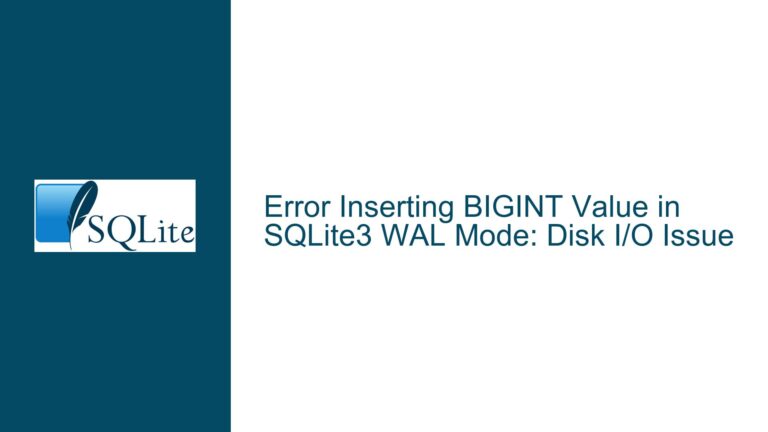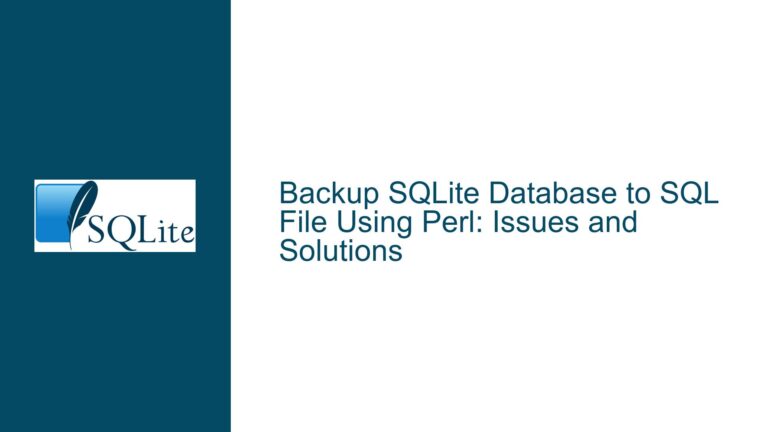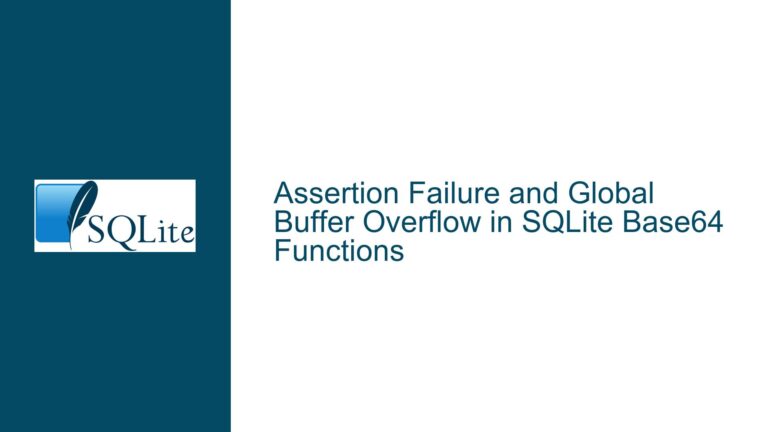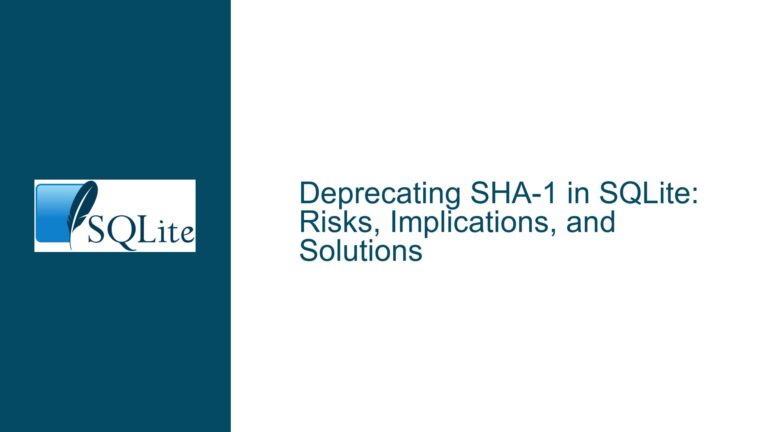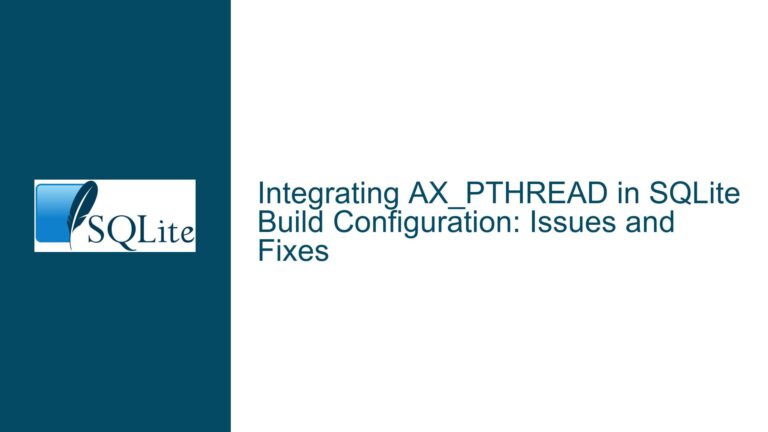Setting Exclusive Lock in SQLite to Force WAL-Index Heap Usage Without mmap()
Understanding Exclusive Locking Mode and WAL-Index Behavior in SQLite
SQLite is a lightweight, serverless database engine that supports multiple concurrency modes, including the Write-Ahead Logging (WAL) mode. In WAL mode, SQLite uses a shared-memory-based WAL-index to manage read and write operations efficiently. By default, the WAL-index relies on memory-mapped files (mmap()) for performance optimization. However, there are scenarios where developers may want to enforce the use of heap memory instead of mmap() for the WAL-index, particularly when dealing with exclusive locking requirements or specific system constraints.
The core issue revolves around configuring SQLite to use an exclusive locking mode that forces the WAL-index to utilize heap memory exclusively, bypassing mmap(). This configuration is not straightforward and requires a deep understanding of SQLite’s locking mechanisms, WAL mode, and the underlying system calls involved.
Why mmap() Might Be Problematic and When Heap Memory is Preferred
The mmap() system call is commonly used by SQLite in WAL mode to map the WAL-index file into the process’s address space. This approach provides several performance benefits, such as reduced overhead for memory management and faster access to shared data. However, there are situations where mmap() may not be desirable:
System Limitations: Some embedded systems or restricted environments may not support mmap() or may impose limitations on its usage. For example, systems with limited virtual memory or those running in highly constrained environments (e.g., IoT devices) may struggle with mmap().
Exclusive Locking Requirements: In certain scenarios, an application may need to enforce exclusive access to the database. While SQLite’s default locking mechanisms are robust, they may not always align with specific application requirements. Forcing the WAL-index to use heap memory can simplify locking strategies and ensure exclusive access.
Debugging and Testing: During development or debugging, it may be necessary to isolate the WAL-index behavior from mmap() to diagnose issues related to memory management or concurrency.
Custom Memory Management: Applications that implement custom memory management strategies may prefer to control how memory is allocated and deallocated for the WAL-index, which is easier to achieve with heap memory.
Understanding these scenarios is crucial for determining whether forcing heap memory usage for the WAL-index is the right approach.
Configuring SQLite to Use Heap Memory for WAL-Index Without mmap()
To achieve the desired behavior of forcing the WAL-index to use heap memory instead of mmap(), the following steps and considerations are essential:
Disabling mmap() for the WAL-Index: SQLite provides a compile-time option called
SQLITE_OMIT_WALthat disables WAL mode entirely. However, this is not a viable solution if WAL mode is required. Instead, thesqlite3_config()function can be used to configure SQLite’s memory allocation behavior. Specifically, theSQLITE_CONFIG_HEAPoption allows developers to define a custom heap memory allocator. By configuring a custom heap allocator, it is possible to control how memory is allocated for the WAL-index.Exclusive Locking Mode: SQLite’s locking mode can be set to exclusive using the
PRAGMA locking_mode=EXCLUSIVEstatement. This ensures that only one connection can access the database at a time, which aligns with the goal of enforcing exclusive access. However, this does not directly address the WAL-index’s use of mmap(). To achieve both exclusive locking and heap memory usage, additional configuration is required.Custom VFS Implementation: SQLite’s Virtual File System (VFS) layer provides an abstraction for file operations, including memory mapping. By implementing a custom VFS, developers can override the default behavior of mmap() and enforce heap memory usage for the WAL-index. This approach requires a deep understanding of SQLite’s internals and is typically reserved for advanced use cases.
Modifying SQLite Source Code: For scenarios where the above methods are insufficient, modifying the SQLite source code may be necessary. Specifically, the
wal.cfile contains the implementation of the WAL-index. By altering the memory allocation logic in this file, it is possible to enforce heap memory usage. This approach is highly invasive and should only be considered as a last resort.Testing and Validation: After implementing any of the above solutions, thorough testing is essential to ensure that the database operates correctly and that the desired behavior is achieved. This includes verifying that the WAL-index uses heap memory, that exclusive locking is enforced, and that performance remains acceptable.
By following these steps, developers can configure SQLite to use heap memory for the WAL-index without relying on mmap(), while also enforcing exclusive locking mode. This approach is particularly useful in scenarios where system constraints or specific application requirements necessitate such a configuration.
In conclusion, configuring SQLite to use heap memory for the WAL-index and enforce exclusive locking mode is a complex but achievable task. It requires a deep understanding of SQLite’s internals, careful configuration, and thorough testing. By following the steps outlined above, developers can address the core issue and ensure that their database operates as intended in even the most constrained environments.

